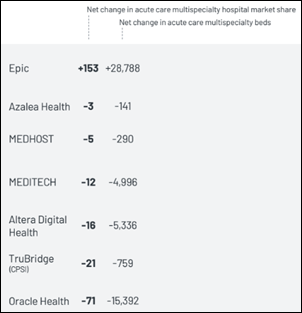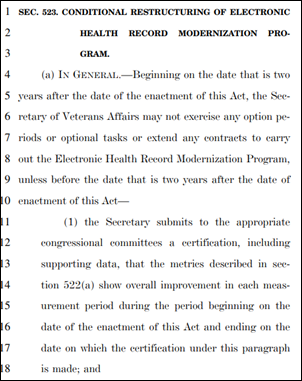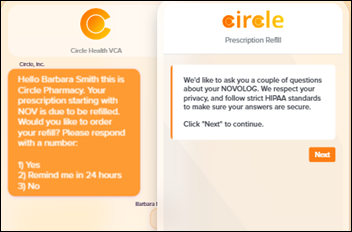Monday Morning Update 5/20/24
Top News
The all-important KLAS report on the US acute care EHR market finds that Epic gained 153 hospitals in 2023 while losing none, while all other vendors showed a net loss of hospitals and beds. Epic now holds a 39% market share of US hospitals, representing 52% of beds.
Oracle Health finished last in losing a net 71 hospitals representing 15,000 beds.
Most of Oracle Health’s wins since 2016 have been in standalone hospitals of under 200 beds. Those hospitals aren’t buying due to economic pressures.
Meditech, which enjoyed an all-time high customer retention rate of 84% in 2022, saw that drop to the lowest-ever 30%, with 25% of that due to M&A.
Reader Comments
From Benny Jets: “Re: article naming the top 10 healthcare AI companies. Most of the list is obvious, but the interesting name is Merative. This is the IBM Watson Health spinout that is led by Gerry McCarthy. In two years, they have reversed the ridiculous IBM strategy and have led each of the core solutions back to the top of their respective markets. Big tech shouldn’t be allowed in healthcare. It is just a matter of time before Oracle drives Cerner into the ground and Francisco Partners buys and fixes that too.” IBM sold the business – which includes the former Truven, Merge Healthcare, and Curam — to Francisco Partners for a reported $1 billion in 2022, after which it hired Gerry – who has spent nearly 35 years in our industry — and renamed itself. I’m not linking to the article in the UK-based magazine because that publication reeks strongly of pay-for-play, it does not include the criteria of how it chooses its many click-baity Top 10 lists, and nobody involved seems to have any experience or knowledge about healthcare. I also don’t know how much AI is used in Merative’s offerings or why even cursory research should have caught the May 2024 list’s inclusion of Babylon Health, a pretty scammy company that filed bankruptcy and died an ugly death last summer. But I agree that Merative is flying under the radar and seemingly shedding the Watson Health baggage.
HIStalk Announcements and Requests

Most poll respondents support the idea of a mandatory, government-issued national patient identifier, although thoughtful comments address the realities of making that happen.
New poll to your right or here: does your business card or email signature list a certification or fellowship credential?
I’m watching more YouTube videos as their quality has improved – documentaries, concert videos, and travel recaps. My use and satisfaction has always been limited by intrusive ads (not Ryan Reynolds again), but I wasn’t willing to spend $18.99 per month to avoid them. I was happy to find that I don’t need to since YouTube Premium is only $13.99 per month or $11.67 if paid annually, provided that you buy it from the website and not the IOS app, where Apple’s 30% skim will cost you an extra $5 per month. There’s also a 90-day free trial. I’m enjoying the ad-free experience, the ability to download videos, playing videos in the background, and the surprisingly strong Apple Music, which I would use constantly if I didn’t already have Spotify Premium. Dig beyond the narcissistic, TikTok style dreck that is good only for wasting time while stunting your brain and you’ll find some solid content out there. Not only that, the experience is stupendously better when played on the big screen.
I’m finding that I use ChatGPT more for web searching. It’s like a pleasant vacation from Google’s ads, spam, and SEO-juiced junk content. I see why Google started holding emergency meetings basically the day that OpenAI released ChatGPT 3.5.

Readers funded the Donors Choose teacher grant request of Ms. I in New York, who asked for STEM manipulatives for her class of three year olds. She reports, “I hope this note finds you well and filled with the same warmth and gratitude with which our classroom overflows, thanks to your incredible generosity. As a teacher, witnessing the excitement and enthusiasm radiating from my students as they engage with the STEM supplies you’ve provided fills my heart with. Your generosity has transformed our classroom into a dynamic learning environment where curiosity thrives, creativity flourishes, and innovation knows no bounds.”
Webinars
None scheduled soon. Previous webinars are on our YouTube channel. Contact Lorre to present or promote your own.
Acquisitions, Funding, Business, and Stock
Waystar is reportedly considering a June IPO after tabling those plans last year due to market conditions.
Sales
- Sturdy Health will implement Notable’s healthcare operations platform, integrated with Oracle Health, for patient outreach and self-service.
People

Cleveland Clinic promotes Sarah Hatchett, MBA to SVP/CIO.
Announcements and Implementations
The Toronto newspaper covers the Meditech Expanse rollout in 23 hospitals in northeastern Ontario.
Epic issues a rare press release in recapping the 9,000-attendee XGM (Expert Group Meetings) that concluded on May 9. It seems like a university’s Alumni Weekend, where people flock back to campus to once again to reconnect with with the like-minded in the hallowed halls, sit around the campfire, and pose for treehouse pictures. All that’s missing is a football game.

HCA Healthcare runs a Q&A with Chief Nursing Informatics Officer Sherri Hess, RN, MS-IS.
Privacy and Security
Ascension has issued no ransomware attack updates since May 15.
Other

Therapists are making more money as influencers who crank out empathetic TikTok self-help videos than they made seeing patients, according to The Cut, which quoted the therapist above who is making $1 million per year via brand deals, selling merchandise, and charging for subscriptions. Still, that therapist still warns that he’s burned out from making videos, dealing with hate comments, and working under a system where “Daddy Algorithm is my boss and I get a performance review every single day based on an algorithm that’s mysterious and doesn’t make any sense.”
Sponsor Updates
- HCTec sponsors the AltaMed Foundation’s annual golf tournament, supporting patients of the AltaMed Medical and Dental Group (CA).
- QGenda announces new and add-on customers of its enterprise credentialing solution, including UT Health San Antonio, Crouse Health, OB Hospitalist Group, and Parkland Health.
- Availity wins two Bronze Stevie Awards for sales and customer service.
- Wolters Kluwer Health launches Ovid Nutrition and Health, an exclusive interdisciplinary health research database.
- Redox releases a new Diagnosing Healthtech Podcast, “Data interoperability now: Why healthcare can’t afford to wait.”
- Hospital Universidad del Norte in Colombia selects Sectra’s enterprise imaging technology.
- Spok publishes an e-book, “Six strategic advantages of consolidated contact centers.”
Blog Posts
- Building more effective health systems through social determinants and patient-centered approaches (Nordic)
- The Impact of AI Trust and Literacy in Your Health System (Optimum Healthcare IT)
- The Nurses of Note 2024: The Infusion Nurse and ‘Ambassador of Enjoyment’ (PerfectServe)
- Leverage Innovative Technology to Drive Pharmacy Growth and Enhance Patient Care (RxLightning)
- Real-Time Prescription Benefit Goes to Work for Health Systems (Surescripts)
- 4 Current Legal Issues in Healthcare (Symplr)
- How to Identify and Address Weak Points in Your Revenue Cycle (TruBridge)
Contacts
Mr. H, Lorre, Jenn, Dr. Jayne.
Get HIStalk updates.
Send news or rumors.
Contact us.













































I've figured it out. At first I was confused but now all is clear. You see, we ARE running the…